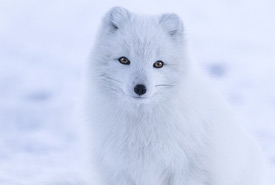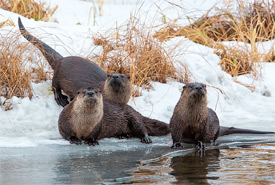Mammals
-
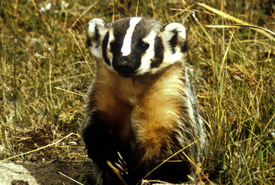
American badger
The American badger is a heavy-bodied, short-legged and short-tailed member of the weasel family. Its muscular neck and thick, loose fur protect it when an animal predator strikes.
-
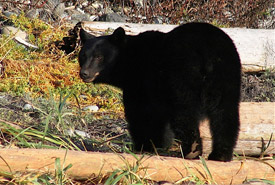
American black bear
Contrary to popular belief black bears are not true hibernators. While the black bear does not have to eat or eliminate waste, unlike many small mammal hibernators, bears can wake up and wander around for short periods during the winter months if the weather becomes uncharacteristically warm.
-
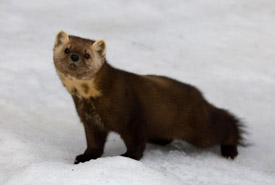
American marten (Newfoundland population)
The American marten (Newfoundland population) is found only on the island of Newfoundland.
-
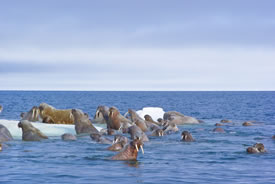
Atlantic walrus
With their prominent tusks and whiskers, the walrus is one of Canada’s most easily recognizable arctic species. Globally there are two recognized sub-species of walrus, the Atlantic and Pacific. Only the Atlantic walrus occurs in Canada.
-
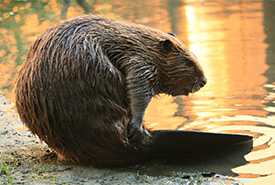
Beaver
What swims like a fish, cuts like a chain saw, logs like a lumberjack and transforms landscapes like a water engineer?
-
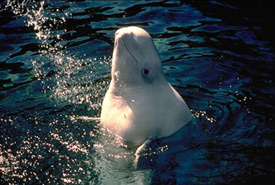
Beluga whale
Beluga whales, or white whales, are toothed whales whose name is derived from the Russian word for white: “belukha.” Nicknamed “sea canaries,” these extremely vocal mammals make various noises, ranging from high-pitched whistles to low, repetitive grunts.
-
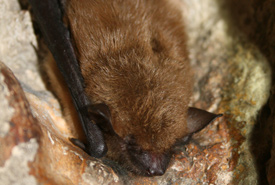
Big brown bat
The big brown bat, one of 18 bat species in Canada, is the most common and abundant bat in North America.
-
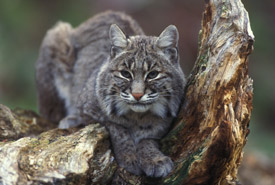
Bobcat
As both predator and prey, life is a fine balance for the bobcats of Quebec's Sutton Mountains. Moving stealthily through the forest, the bobcat searches for mice and rabbits, and attempts to avoid coyotes and other predators.
-
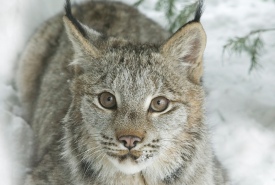
Canada lynx
The Canada lynx is one of three cats that inhabit Canada's boreal forest. This species is primarily found throughout Cape Breton Island and Newfoundland and in the forested areas of northern New Brunswick.
-
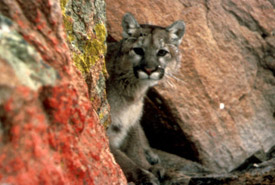
Cougar
The cougar is one of the largest and most powerful predators in North America. A large male Cougar can measure up to eight feet in length and weigh over 200 pounds.
-
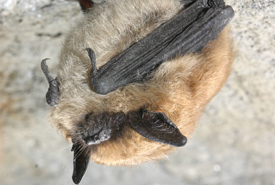
Eastern small-footed bat
The eastern small-footed bat is one of 18 bat species in Canada. As its feet measure only seven to eight millimetres in length, this species’ name is apt.
-
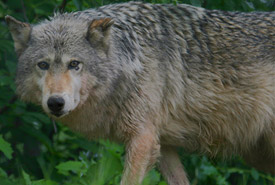
Eastern wolf
Found in the forests of the Great Lakes and St. Lawrence regions of Quebec and Ontario the eastern wolf is one of the most elusive at-risk carnivores.
-
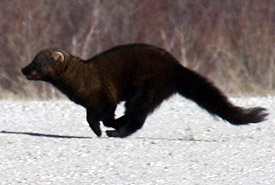
Fisher
The fisher is a solitary, wide-ranging mammal native to Ontario. A member of the weasel family, the fisher lives in coniferous habitats across much of Canada and the northern U.S.
-
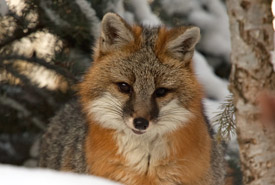
Gray fox
The gray fox is the only canine in the western hemisphere that can climb trees. Thanks to sharp, hooked claws it can also jump from branch to branch. But with bobcats, coyotes and dogs as predators it must remain watchful.
-
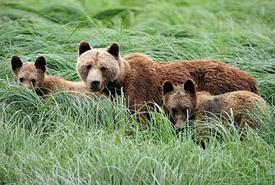
Grizzly bear
The grizzly bear, one of the strongest and most impressive mammals in North America, is a symbol of Canadian wilderness. The grizzly is able to run at speeds of 45 kilometres/hour and can weigh 100-400 kilograms (220-880 pounds).
-
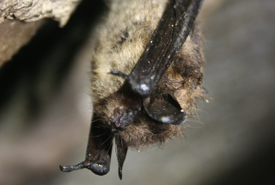
Little brown bat
Little brown bat is one of 19 bat species in Canada. It has glossy brown fur and measures just eight to 10 centimetres in length.
-
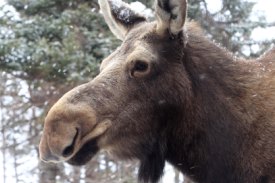
Moose
The moose is the largest of all the deer species, standing about five to six and a half feet tall. Males (called bulls) are immediately distinguishable by their iconic antlers, which can spread almost two metres long.
-
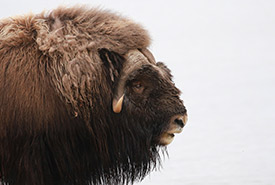
Muskox
Muskox lives in the Canadian Arctic for good reason. Thick, dark, fluffy hair covers it from head to rump. While visually similar to bison, muskox is genetically closer to sheep and goats.
-
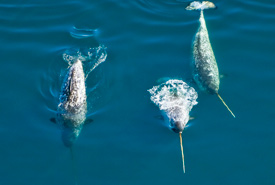
Narwhal
Known to many as the ”unicorn of the sea,” narwhals are a small, pale-coloured whale with only two teeth. In most males, the right tooth remains in the skull, while the left tooth grows as a spiral tusk that can be up to three metres long.
-
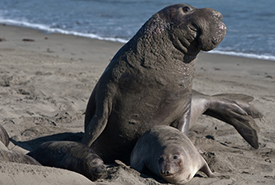
Northern elephant seal
Elephant seals are named for their most defining feature: their large noses, which resemble an elephant’s trunk.
-
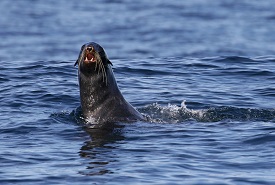
Northern fur seal
Bouncing back from intensive hunting practices that left the species on the verge of extinction, the northern fur seal can now be found across the coastal waters of the north Pacific.
-
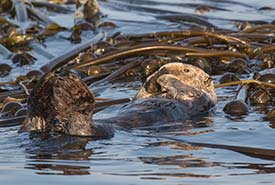
Northern sea otter
The average northern sea otter has a lung capacity 2.5 times greater than other mammals of the same size.
-
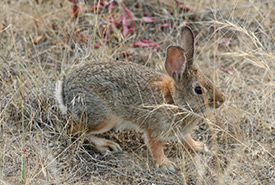
Nuttall’s cottontail
Also called mountain cottontail, Nuttall’s cottontail is a small rabbit that measures up to just under 40 centimetres in length.
-
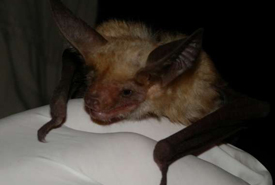
Pallid bat
Pallid bats are on the larger side of bat species, with females reaching up to 13 centimetres long and males being a bit shorter. It has large ears and slightly larger eyes than what is typical for a bat.
-
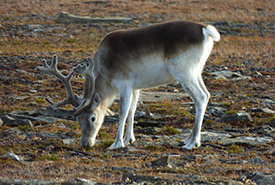
Peary caribou
Peary caribou are found only in Canada, ranging across the treeless tundra of the high Arctic islands of the Northwest Territories and Nunavut.
-
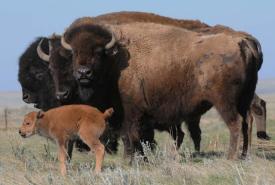
Plains bison
A symbol of determination and indomitable spirit, bison are unmistakable by appearance from other cloven-hoofed, ruminant animals with their massive woolly heads, curved black horns and forequarters.
-
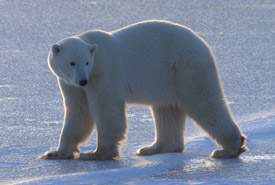
Polar bear
Not only is the polar bear the biggest bear species, it is also the world’s largest land carnivore.
-
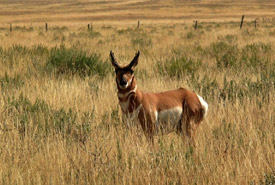
Pronghorn
Standing almost three feet tall at the shoulders, this small, fleet-footed hoofed mammal is the fastest land mammal in North America, reaching speeds of up to 100 kilometres an hour.
-
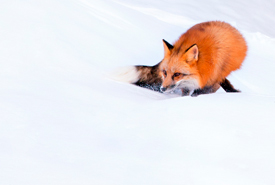
Red fox
Despite their perceived boldness and cunning in children’s stories, including The Fantastic Mr. Fox, red foxes are shy but curious by nature.
-
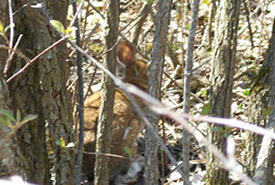
Snowshoe hare
Snowshoe hares are named for their large hind feet, which, like snowshoes, allow them to stay on top of the snow during Canadian winters.
-
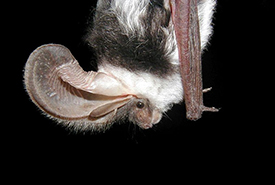
Spotted bat
The spotted bat has a widespread but patchy distribution in western North America, and is generally considered rare where it occurs.
-
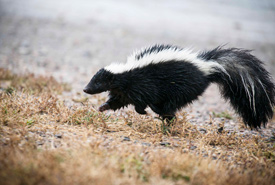
Striped skunk
One of Canada’s most common mammals, striped skunks are known mainly by their ability to spray sulfur-containing chemicals strong enough to ward off bears and other predators.
-
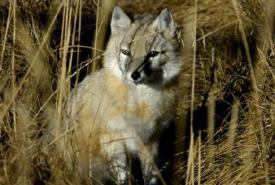
Swift fox
Swift fox gets its name for its speed, travelling through the Prairies at speeds of up to 60 kilometres an hour.
-
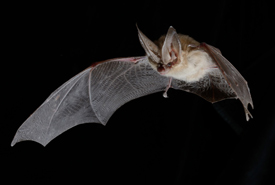
Townsend's big-eared bat
The Townsend's big-eared bat is a species of vesper bat. It consumes large amounts of mosquitoes and other flying insects during its nightly feedings.
-
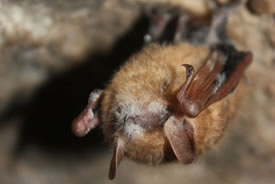
Tri-colored bat
The tri-colored bat, formerly known as the eastern pipistrelle, is one of 18 bat species in Canada.
-
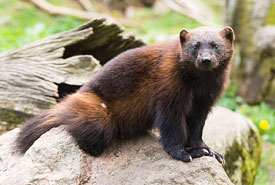
Wolverine
A Marvel Comics favourite and Hollywood darling, Wolverine is known to strike fast and furious.


